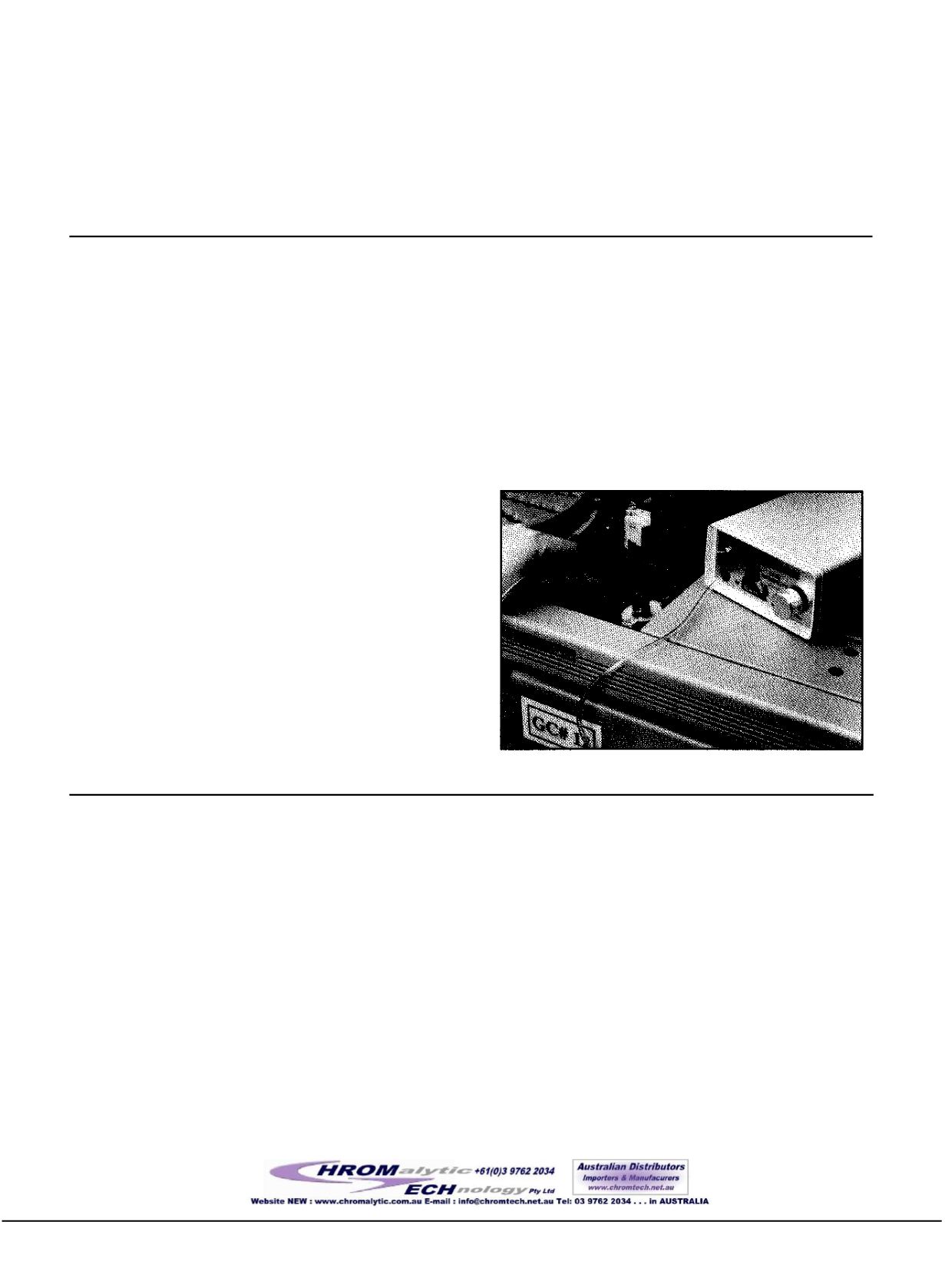
to its tenacious trapping ability. Narrow 1/4" trap bodies cause
increased back pressure on the inlet system and severely
increase retention times. In addition, the excessive back
pressure on the split vent outlet can cause the back pressure
regulator to perform erratically when the solvent expansion
pulse occurs. Therefore, a large trap body design maximizes
the quantity of charcoal that comes in contact with the
sample vapor stream without causing unreasonable back
pressure. Trap bodies made from solvent resistant plastics
either crack or leakwith continuous solvent exposure. A
glass trap body provides the best resistance and longevity
from repeated solvent injections.
The trap capacity determines the number of injections that
can be performed before solvent breakthrough occurs. High
capacity traps provide protection for thirteen hundred
injections or fifty days if one analysis is performed per hour.
Leak Checking
Many GC problems can be avoided by leak checking the
system during the plumbing process. Loss of GC gases,
reduced trap lifetime, damage to capillary columns, and
increased detector maintenance will result if a leak is present.
Leak checking the instrument before column installation and
conditioning prevents column degradation indicated by high
bleed and short lifetime. Irreversible damage can occur if a
column is exposed to oxygen at high temperatures. Addition-
ally, some detectors (for example, an ECD) are very sensitive
to oxygen and can easily be damaged by oxygen exposure.
Leak checking should be performed from the tanks to the GC,
including all the fittings inside the GC. The GC fan should be
turned off during leak checking. Next, check the external
fittings along the carrier gas line for leaks. Leak detectors
such as the Restek Leak Detective ( 110 volts: cat.# 21607,
220 volts: cat.# 21609), Gow-MacLeakDetector (cat.#
20130), or Compact LeakDetector (cat.# 21605), detect
minute traces of helium or hydrogenwithout contaminating
the system. Never use liquid leak detectors that contain soap
or surfactants. Liquids can be drawn inside the fitting at the
site of a leak by the Venturi effect and contaminate the
system.
If a thermal conductivity leak detector is not available, a
pressure decay test can also be used to find major gas leaks.
To perform a pressure decay test, first cap off all possible gas
outlets including the injection port and the detector fittings.
Next, shut off the gas supply at the cylinder. In a leak free
system, the line pressure observed at the two-stage regulator
will hold constant for 15minutes or longer. A rapid loss of
pressure indicates that leaks are present. If this is the case,
isolate smaller sections of the plumbing by capping off the
line closer to the cylinder and recheck the pressure drop after
closing off the gas supply. Repeat this process untilthe leak is
found, then retest the entire system to ensure pressure is
maintained.
Proper leak checks increase column lifetime/reduce detector noise.
Instrument Logbook
A goodGCmaintenance program focuses on the inlet,
capillary column, detector(s), oven calibration, traps and
Another step in setting up a GC is creating an instrument
logbook. Detailed documentation is crucial to the operation
of any testing lab, therefore, record all of the steps involved
in installing the new GC in your laboratory. Additionally,
develop aGCmaintenance schedule and document all
maintenance performed (Figure 10 on page 12). A routine GC
maintenance schedule will minimize system troubleshooting,
increase sample throughput, and improve analytical accuracy.
purifiers, and leak checking. GC documentation should also
include analytical information (number of analyticalse-
quences run, type and number of samples analyzed, appear-
ante of sample) and any troubleshooting or repairwork
performed on the instrument. Documentation and routine
maintenancewillmake future troubleshooting efforts less
time consuming.
11
11
1998


